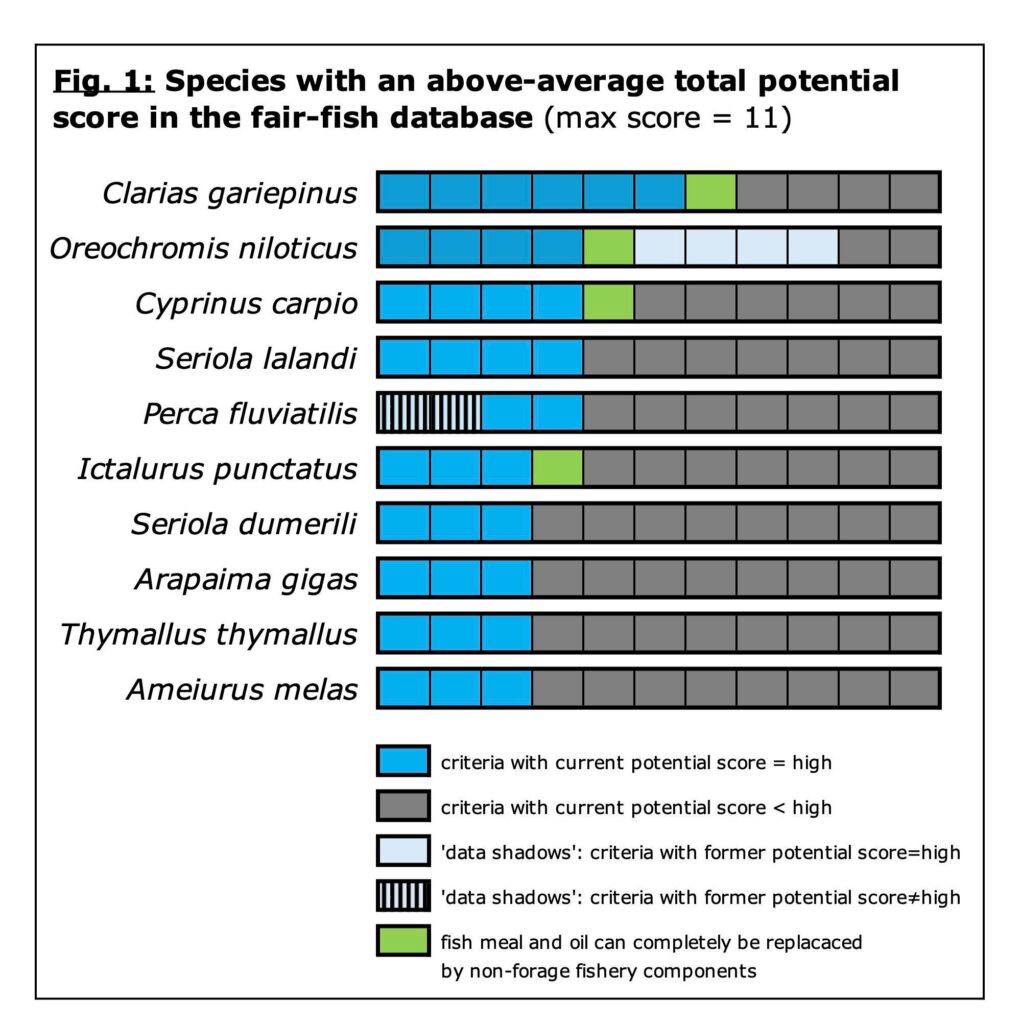
Resources are, as always, limited. Should we then invest in improving some details in the lives of over 500 farmed aquatic animal species, most of which are known not being able to experience welfare in captivity anyway? Or should we rather focus on the few species that possibly may thrive under improved farming conditions?
Critical notes on a paper published by the fair-fish database team
The science of fish welfare must be careful to not lead to greenwashing. Improving farming conditions for species with very low welfare potential, such as the overwhelming majority of species, may alleviate some of the discomfort of farmed fishes, but cannot make them experience welfare.
The graph shows the few species with a relatively high overall potential of experiencing welfare under best possible farming conditions — all the other out of about 90 species assessed so far show an overall potential of only 2 or lower; most of them do not even exceed potential score 0. Is it wise to focus research and development on species such as salmon, trout, sebream, seabass, etc., that will most probably not feel really well even under best conditions?
